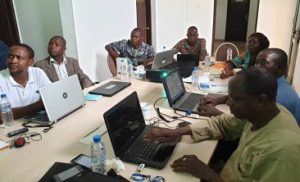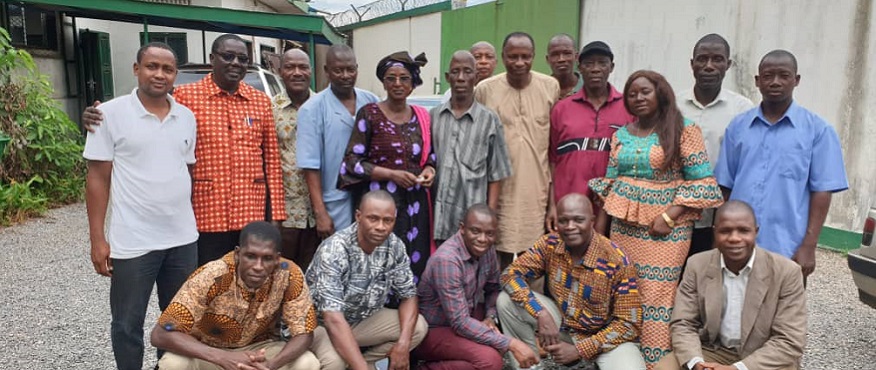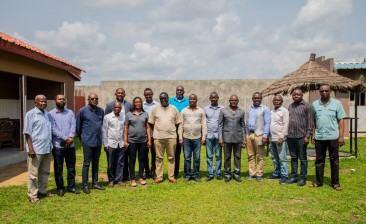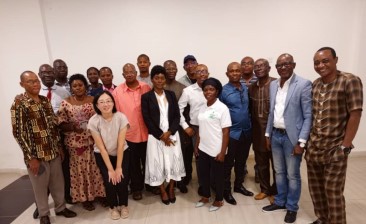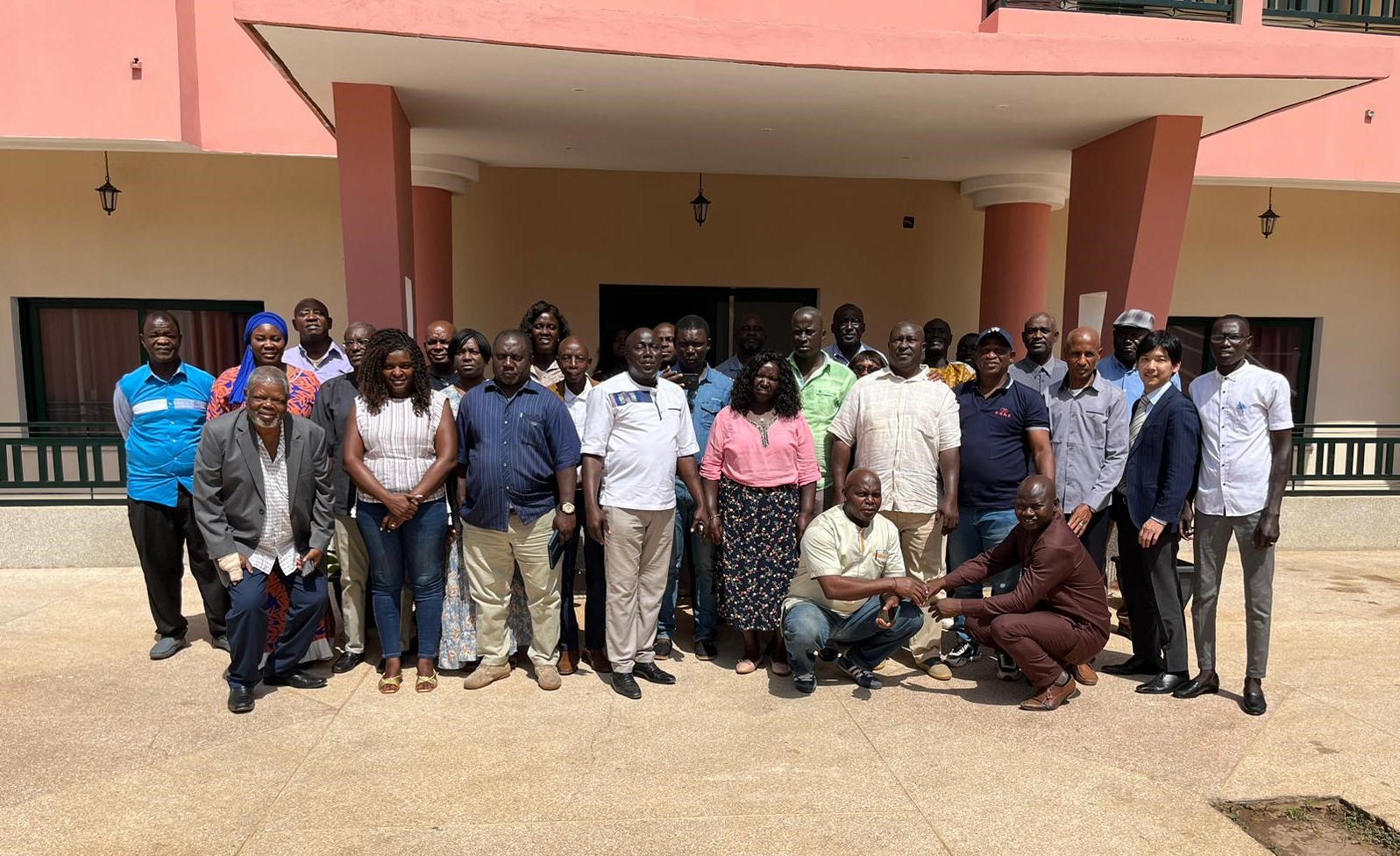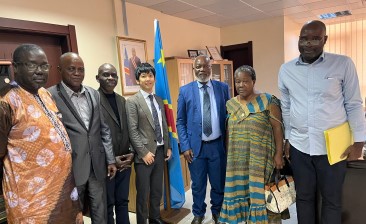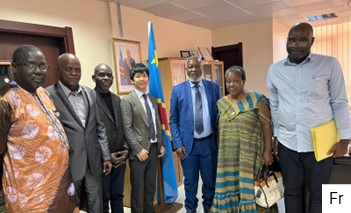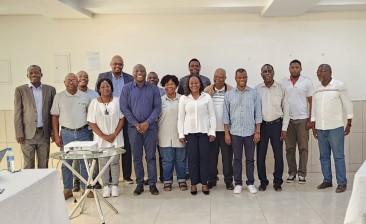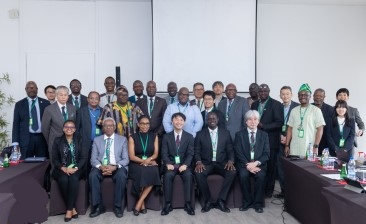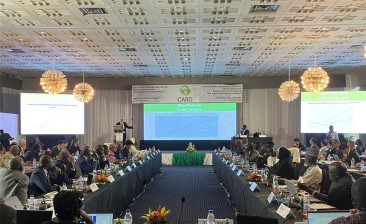Guinea, July 2019
Third Working Week on the finalization of National Rice Development Strategy of Guinea
In Guinea, rice is one of the major staple foods of the population. Its production has increased significantly from 1,465,700 tons in 2008/2009 to 2,340,000 tons in 2017/2018. This increase in production is mainly due to an increase in area and yield. However, it should be noted that despite these good performances, the local rice production does not meet the needs of the population. The deficit is filled by imports, which has increased from 261, 000 tons in 2010 to 604, 000 tons in 2017.
To reverse this trend, Guinea is planning to develop a second generation of NRDS (NRDS II) that will allow the country to achieve rice self-sufficiency. It is in this context that a third working week was conducted between 1st and 5th of July, 2019, which brought together the main actors of the rice value chain. The objective of the third working week was to finalize the draft of the NRDS II mainly through development of an action plan and logical framework and determination of the costs of the strategy, the risks, the impacts and the sustainability of the proposed actions.
Key outputs / Results
In term of the results, it should be noted that the participants developed the draft of the NRDS II, which constitutes the frame of reference for all public and private interventions for the development of the rice sector. Its elaboration followed a participatory approach, involving all key actors.
The NRDS II targets a total production of nearly 5 million tons of paddy by 2030. To this end, the paddy production will be carried out over an estimated area of 1,442,858 ha, of which 200,000 ha will be under irrigated rice cultivation, 220,000 ha under lowland, mangrove, and 1,014,286 ha under rain fed rice cultivation. The NRDS II will promote the access to inputs (such as seed, fertilizer, etc.) through granting of 24,046 tons of improved seeds. For fertilizers and plant protection products, the quantities estimated for achieving the objectives of the NRDS II are 72,000 tons of urea, 145,000 tons of NPK, 3,000,000 liters of herbicides. With regard to improving access to machinery and agricultural equipment, the focus will be on access to private ownership and access to the private service delivery. Domestic capacities of paddy processing will be enhanced through establishment of 1,263 modern processing units. Distribution and marketing circuits will be improved through support for the realization of marketing infrastructures, upgrading of storage infrastructures and branding of locally produced rice.
With an estimated total cost of about US$ 1.412 Billion, the Government, Donors, NGOs, local communities and the private sector, will provide the financing for the implementation of the NRDS II.
The implementation of the strategy will have tangible impacts on the socio-economic development of the country. In this regards, the targeted increase in production will cover the domestic rice consumption needs of about 122% by 2030. It will help balance the country’s food trade by providing foreign exchange gains equivalent to US $ 700 million. In addition, the private sector will be heavily involved and nearly 1,000 new processing units (all sizes) will be created in addition to those already existing. It is estimated that the implementation of the NRDS II will help create about 300,000 new jobs in the sector which will benefit young people and women.
The strategy adopted for the sustainability of the proposed actions is mainly based on:
(i) government focusing on its sovereign role,
(ii) a greater involvement of the private sector in the rice value chain and
(iii) a contract based system to make those involved more responsible.
Currently, many initiatives are ongoing or under formulation that will enable the rapid implementation of the NRDS II. A review of the projects in the sector shows that there are 21 projects, of which about 9 projects are in progress for an amount of 20.5 million USD, 6 projects are in the start-up phase for an amount of 268 million USD and 6 projects are in negotiation for an amount of 39.5 million USD.
The analysis of the distribution of projects according to the different segments of the rice value chain shows that 57% of the projects are focused on production, processing and capacity building. In addition, 72% of the start-up projects are also focused on the above-mentioned segments. Also, the analysis indicates that 35% of the projects are implemented in the priority area of the NRDS, which is Lower Guinea.
Upon finalization, the NRDS II will be circulated among CARD steering committee members and other development partners for inputs, after which a validation workshop will be organized for the wider stakeholders. All these activities are expected to be done before October 2019. After the validation of the NRDS II by the stakeholders, the CARD Secretariat will support the development of concept notes.
